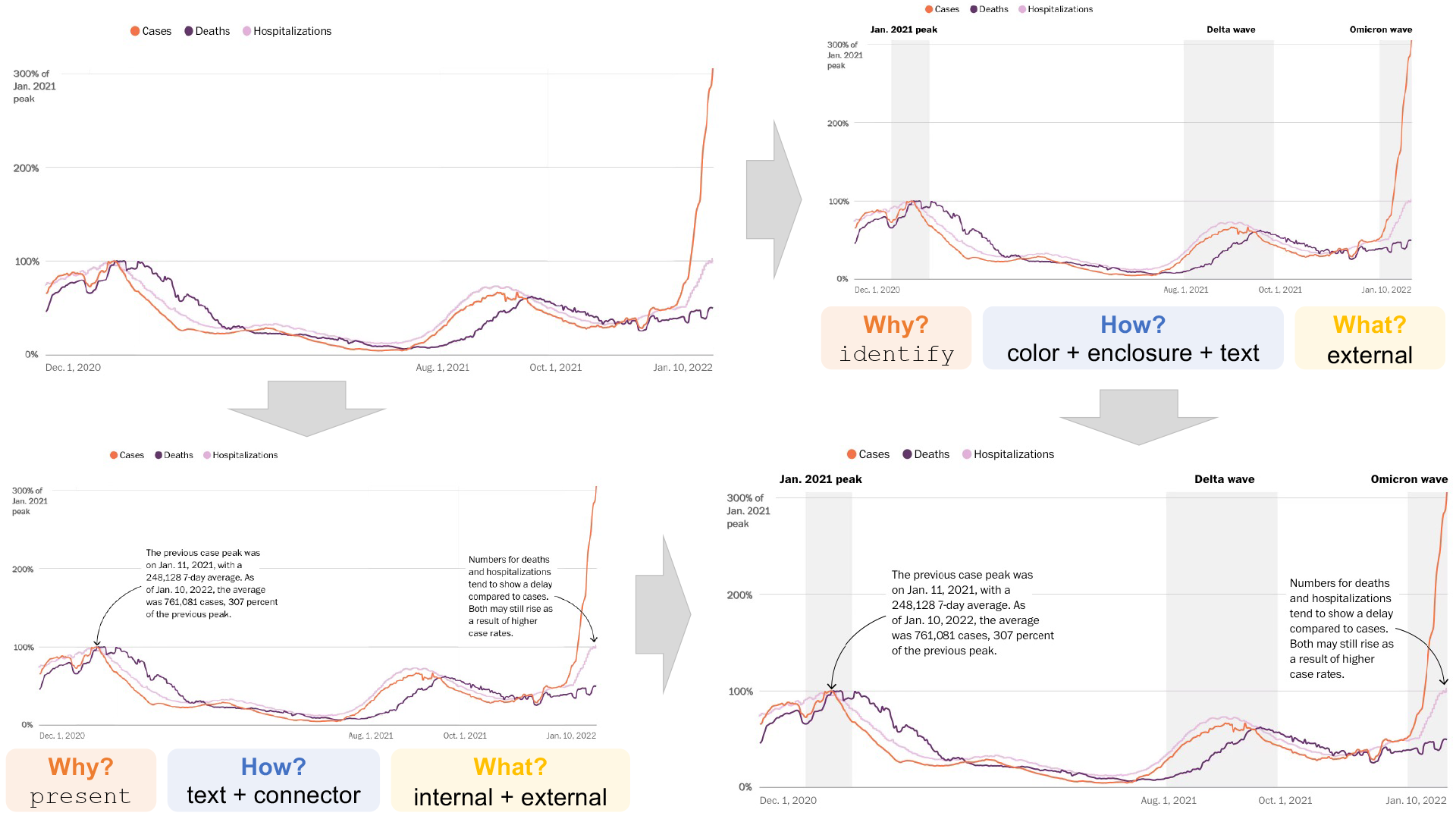A Qualitative Analysis of Common Practices in Annotations: A Taxonomy and Design Space
Md Dilshadur Rahman - University of Utah, Salt Lake City, United States. University of Utah, Salt Lake City, United States
Ghulam Jilani Quadri - University of Oklahoma, Norman, United States. University of Oklahoma, Norman, United States
Bhavana Doppalapudi - University of South Florida , Tampa, United States. University of South Florida , Tampa, United States
Danielle Albers Szafir - University of North Carolina-Chapel Hill, Chapel Hill, United States. University of North Carolina-Chapel Hill, Chapel Hill, United States
Paul Rosen - University of Utah, Salt Lake City, United States. University of Utah, Salt Lake City, United States
Download preprint PDF
Download Supplemental Material
Room: Bayshore V
2024-10-16T12:42:00ZGMT-0600Change your timezone on the schedule page
2024-10-16T12:42:00Z

Fast forward
Full Video
Keywords
Annotations, visualizations, qualitative study, design space, taxonomy
Abstract
Annotations play a vital role in highlighting critical aspects of visualizations, aiding in data externalization and exploration, collaborative sensemaking, and visual storytelling. However, despite their widespread use, we identified a lack of a design space for common practices for annotations. In this paper, we evaluated over 1,800 static annotated charts to understand how people annotate visualizations in practice. Through qualitative coding of these diverse real-world annotated charts, we explored three primary aspects of annotation usage patterns: analytic purposes for chart annotations (e.g., present, identify, summarize, or compare data features), mechanisms for chart annotations (e.g., types and combinations of annotations used, frequency of different annotation types across chart types, etc.), and the data source used to generate the annotations. We then synthesized our findings into a design space of annotations, highlighting key design choices for chart annotations. We presented three case studies illustrating our design space as a practical framework for chart annotations to enhance the communication of visualization insights. All supplemental materials are available at \url{https://shorturl.at/bAGM1}.